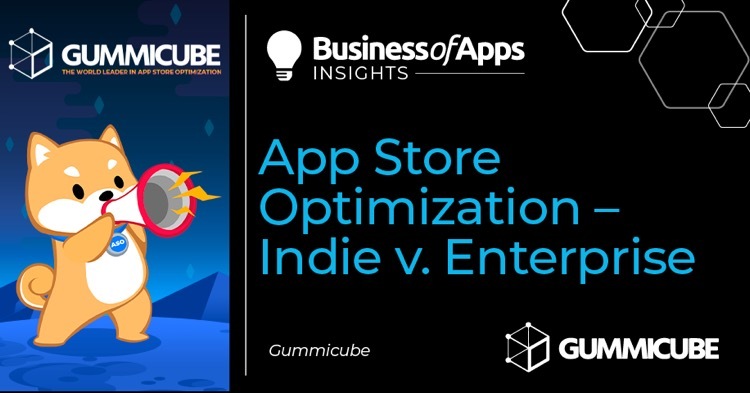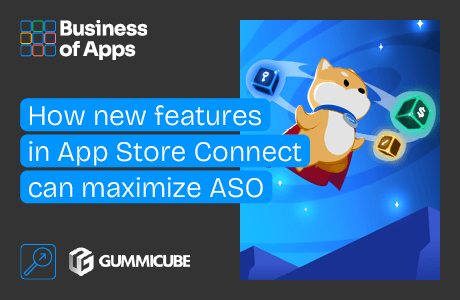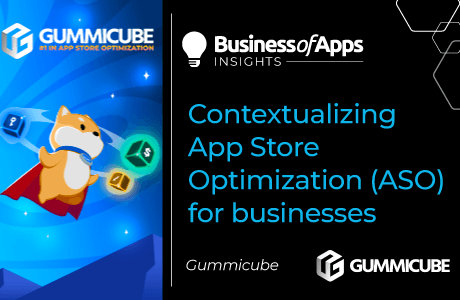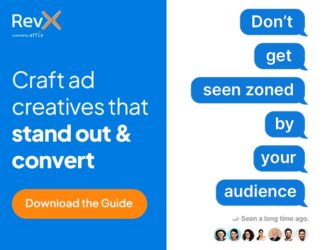The process of App Store Optimization is important no matter how well established or large your app is. When it comes to indie developers who are starting with no recognizable brand or awareness, App Store Optimization is crucial in order to improve the visibility of your app. The fundamentals of ASO can start your new app on the right foot by optimizing for organic search, optimizing conversion rate through iterative A/B testing, and utilizing paid marketing channels in order to boost organic efforts.
App Store Optimization for organic search
Optimizing for organic search traffic is especially crucial for newer apps on the iOS App Store and the Google Play Store in order to build brand awareness and visibility. An indie developer’s brand is not as established as other companies that are dominating the charts. Therefore, the most important opportunities for indie apps come from search traffic. According to Apple, around 70% of users discover an app via search, which confirms that search optimization is an effective way to reach a large number of users.
Search optimization starts with keywords. An app should strive to have a large footprint of relevant and commonly queried search terms. This applies for both well established apps and lesser known indie apps. While it looks a little different on each platform, by targeting certain keywords and phrases within the metadata, your app can build relevancy in the app stores and achieve higher rankings.
When it comes to the iOS App Store, relevance is built both by your keyword bank and by the front-facing metadata included in your title and subtitle. On the Google Play Store, however, you will not have a back-end keyword bank to rely on for keyword relevance. For this platform, it is important to write your front-facing metadata in such a way that it is engaging for users and easily indexed for relevant keywords by Google Play’s indexation algorithm.
Even for a well established brand, search optimization can be a valuable tool to increase visibility and ensure users who are using keywords other than your brand name are targeted. By researching which phrases are being utilized by your target audience, you can expand your overall reach in the app stores. Optimizing and ranking highly for relevant search queries means your app is put at the forefront of search results of users who may be unfamiliar with your brand.
Regardless of which platform you intend to publish on, keyword selection can be a daunting undertaking. It is important to use tools like App Store Optimization software to determine which keywords are objectively relevant to your app and highly searched. One issue some indie developers can encounter is the immense amount of competition from more established apps in the app stores. Competing with these large brands requires more than just the perfect keyword set. This is where testing your metadata and creatives comes into play.
The importance of iterative testing
Iterative testing is the best practice process for running experiments on your app’s metadata or creative assets in order to determine what drives user conversion. By iterating tests you build upon knowledge attained from one experiment and carry it over into future experiments. This allows more actionable insights to be gained in a shorter amount of time because learnings compound upon one another.
Iterative A/B testing can be applied to both creative assets and metadata, however it is more commonly seen in the context of creative assets. The Google Play Store has a native A/B testing platform in the form of Google Play Listing Experiments. Google Play Listing Experiments allows developers to test a wide number of variables that make up their store listing. Developers can choose to test their creatives, such as screenshots and the icon, as well as front-facing metadata like the short description and the full description.
While there is not yet a native A/B testing platform for the iOS App Store, Apple announced at WWDC 21 that they would be providing testing platforms in the form of Product Page Optimization and Custom Product Pages. At the time, Apple stated that these features will be released “later this year”. However, Apple has recently made their new features available on App Store Connect for bigger apps and will most likely roll them out to all developers by the end of 2021 or early 2022.
Historically, developers for the iOS App Store have needed to rely on less robust testing strategies. Apple Search Ads provides a proxy for A/B tests with Creative Set Testing, which allows developers to run ads on iOS Search with screenshots from their store listing as the creative asset for the ad. A benefit of this is that it reflects search behavior on the App Store more closely than any type of third party testing platform. However, there is still a difference in users who are likely to click on an ad rather than users who will navigate to your app in search organically.
Established apps have the benefit of a recognizable brand that draws in users by name alone. Indie developers and smaller companies need to build their branding from the ground up in order to contend with these big players. By optimizing creatives to apply best practices as seen on both platforms and capitalizing on current trends in their category, indie developers can give more incentive for new users to download their apps.
A/B testing can also help your indie developer with figuring out what converts best for your product and brand, which can be used to guide branding decisions on the store listing, in-app and for your company in general. For established brands, A/B testing means having additional insight into what variations of your app’s assets convert best beyond brand recognition. App Store Optimization is an iterative process, providing the opportunity to research trends, study the results of your builds, and build upon that success to improve overall performance.
The paid marketing coefficient
Optimizing for organic search can place an indie developer leagues ahead when trying to contend with the thousands of apps that get released to the app stores daily. Sometimes other steps might need to be taken to help reach your targets. Paid marketing is the go-to for getting any product or service in front of more potential customers and this remains true when that product is a mobile application. Not all advertising platforms are the same when it comes to App Store Optimization, and the right marketing strategy can compliment your App Store Optimization efforts to not only increase organic visibility, but also lower overall cost per acquisition.
Paid campaigns are a great way to gain traffic and get your app in front of more users. This is especially true if your app is new to the stores as it can take some time to establish an amount of traffic that can drive up keyword rankings and visibility. Indie developers and new apps may not rank for many terms at the start and generally have a lower volume of traffic. Paid campaigns can help supplement indexation by driving more traffic to the page, thus benefiting the entirety of your App Store Optimization effort.
Overall
If you are a developer who is new to the iOS App Store or the Google Play Store, then App Store Optimization is crucial for getting your app discovered and installed by more users. In contrast, as a well established app you may be relying too heavily on brand recognition and missing out on additional opportunities for visibility.
Regardless of your app’s status, App Store Optimization can help your app target and rank for a wider set of keywords that are relevant to your features. By doing so, you open up the possibility of growing your presence in the app stores and being discovered by a greater range of engaged users. While organic optimization should be a number one priority when it comes to marketing your mobile application this should be supplemented by additional efforts. Through iterative A/B testing and the complementary effects of a well-optimized paid campaign, your app can rise in the charts to contend with even the most well-known and well-established apps.












